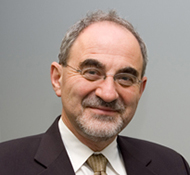Eli Yablonovitch

Professor Eli Yablonovitch is Director of the NSF Center for Energy Efficient Electronics Science (E3S),a multi-university Science and Technology Center headquartered at the University of California, Berkeley.
Professor Yablonovitch received his Ph.D. degree in Applied Physics from Harvard University in 1972. After graduatinghe worked for two years at Bell Telephone Laboratories, and then became a professor of AppliedPhysics at Harvard. In 1979 he joined Exxon to do research on photovoltaic solar energy. Then in1984, he joined Bell Communications Research, where he was a Distinguished Member of Staff, andalso Director of Solid-State Physics Research. In 1992 he joined the University of California,Los Angeles, where he was the Northrop-Grumman Chair Professor of Electrical Engineering. Then in2007 he became Professor of Electrical Engineering and Computer Sciences at UC Berkeley, where henow holds the James & Katherine Lau Chair in Engineering.
Professor Yablonovitch is a Fellow of the Optical Society of America and the American Physical Society.He is a Life Member of Eta Kappa Nu, and a Member of the National Academy of Engineering and theNational Academy of Sciences. He has been awarded the Adolf Lomb Medal, the W. Streifer ScientificAchievement Award, the R.W. Wood Prize, the Julius Springer Prize, and the Mountbatten Medal.He also has an honorary Ph.D. from the Royal Institute of Technology, Stockholm, Sweden, awarded in 2004.
In his photovoltaic research, Professor Yablonovitch introduced the 4n2 light-trapping factor that is usedcommercially in almost all high performance solar cells.
Professor Yablonovitch also introduced the idea that strained semiconductor lasers could have superior performancedue to reduced valence band (hole) effective mass. Today, almost all semiconductor lasers use thisconcept, including telecommunications lasers, DVD players, and laser pointers.
Professor Yablonovitch is regarded as one of the Fathers of the Photonic BandGap concept, and coined theterm “Photonic Crystal”.
